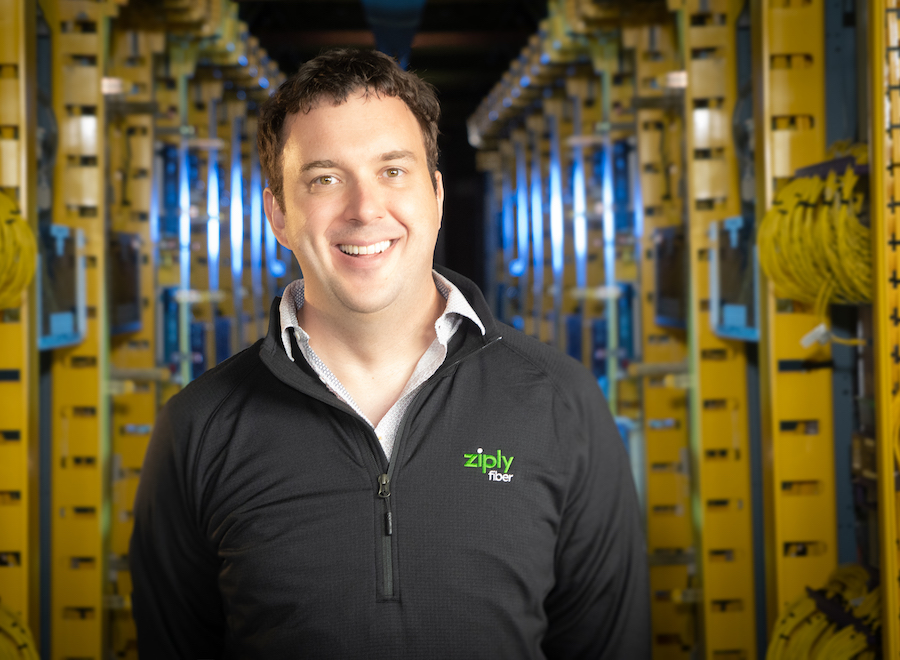Brand Story – How a new telecommunications company is betting on fiber and the future of the Pacific Northwest
When Ziply Fiber launched in 2020, its sights were set on building a fiber network across the Pacific Northwest, a groundbreaking ambition for the telecommunications industry. Convinced that fiber is the only future-proof internet solution, the team significantly invested in new infrastructure from the start in order to bring quality connectivity to all.
Ziply Fiber acquired Frontier Communications in a $1.35 billion-dollar transaction with one goal in mind: to build an uninterrupted, 100-percent fiber network that serves nearly every community it could in Oregon, Washington, Idaho and Montana, and while doing so, deliver a refreshingly great customer experience.
“We’re unique in that not many networks prioritize putting all customers on fiber, but it was an easy decision,” explains John van Oppen, VP, Network, Ziply Fiber. “You just can’t replicate the experience of an all-fiber network. It’s about customers. We’re here to keep customers for a long period, and that means providing the best service we can.”
 John van Oppen, VP, Network, Ziply Fiber
John van Oppen, VP, Network, Ziply Fiber
Fiber’s strengths boil down to speed and reliability. Its low latency means data can travel roundtrip from computer to server quickly…very quickly. It’s roughly one third the speed of light — a stark contrast to the older DSL network Ziply inherited in the acquisition and has been busy upgrading for the past two years.
What does this mean for the average user? Nothing: no delays, no compromises, no crashes.
“Anybody working from home or with a family using a wide array of internet hungry devices simultaneously will notice the difference immediately. No more buffering, drops or lag,” Van Oppen says. “It’s fast enough that you can use the internet like a local area network. That’s a game changer.”
This newfound speed lets the new world of hybrid workers switch between cloud-based and on-premise applications seamlessly. Thanks to fiber, the cloud can operate like a true, limitless extension of one’s hard drive.
The sky is the limit for businesses that need to store and access data, upload media, hold simultaneous video conferences, adopt new applications and operate without constraints.
“For so long we’ve been used to telecoms providing a service that we had to work around,” Van Oppen adds. “Now we’re to the point where our products are not a constraint and that was always the goal. Our job is to fade into the background.”

While most providers depend on electronics placed in the field between their hubs and customers, Ziply Fiber runs a passive network that relies solely on equipment at both end points. This key decision boosts network reliability by removing potential points of failure.
All of its facilities feature at least three hours of backup battery power and 72 hours of fuel for use in the case of an emergency, such as the 2020 wildfires in Detroit, Oregon. Despite damage to its own building, Ziply Fiber successfully relaunched Detroit’s connectivity within three days of the fire, quickly returning cell service to residents.
The telecommunications company owns, rather than rents, its own facilities (about 350 buildings in total), giving it the freedom to outfit each site as needed. To overcome pandemic supply chain challenges, the team leveraged its real estate footprint to store large amounts of fiber-optic cable and spare equipment, allowing for a smooth launch and expansion during particularly complex times.
Through the acquisition, Ziply Fiber gained access to preexisting cable conduits and buildings. From there, the team took a surgical approach: laying fiber, building a new network and migrating traffic. With a $500 million infrastructure investment, the company will continue improving the network, replacing existing cable and connecting new cities and towns across the Northwest.
During its first year of business, Ziply allocated $30 million to the implementation of a backbone network that connects its core markets, supporting higher capacity routes between Portland, Seattle and the surrounding regions.
“The most important decision we made was to invest in upgrading our infrastructure at the very beginning,” Van Oppen recalls. “It’s allowed us to move faster with construction without any degradation in service. We’ve done everything without forgetting the basics, like making sure we have plenty of capacity and no congestion at peak of day anywhere in our fiber infrastructure. Very few ISPs can say that.”

Ziply Fiber connects to all major content networks, ensuring that Oregonians enjoy high-traffic websites like Amazon and Netflix with as little delay as possible. It also directly links to major data centers in Hillsboro and Portland, creating a Silicon Forest Ring that benefits commercial operations throughout the region.
Beyond securing more robust hub connectivity, Ziply Fiber also prioritizes the introduction of service to central and coastal Oregon towns — from Bandon to Brookings and La Grande to Wallowa — laying the groundwork for revitalized economies and decentralized job opportunities across the state.
“It makes me proud to see these communities get the same high-speed broadband that you would find in Portland, and we charge the same we do everywhere else,” Van Oppen says. “It allows people to move to small cities without fear that they can’t do their jobs.”
He also highlights the environmental benefits of fiber, which requires significantly less energy than cable and lasts longer too. Ziply Fiber has encountered fiber-optic cables laid in the eighties that work well for generations when properly maintained.
The company will continue on its journey to build a network that supports any possible applications its customers dream up, today and well into the future: “Fiber just works,” Van Oppen concludes. “We have an opportunity to provide something better, so we will.”
Brand stories are paid content articles that allow Oregon Business advertisers to share news about their organizations and engage with readers on business and public policy issues. The stories are produced in house by the Oregon Business marketing department. For more information, contact associate publisher Courtney Kutzman.




